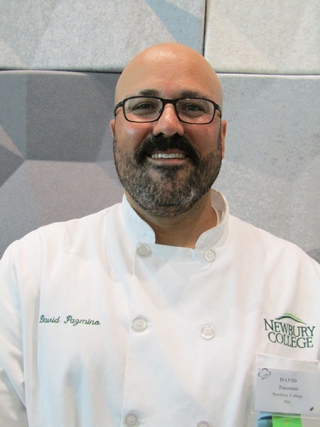
Production-based Teaching Prepares Students in Soft and Hard Culinary Skills
09 April 2018Scaffolding soft performance and organizational skills with core culinary skills allows teaching to happen in production.
By Chef David Pazmiño of Newbury College
Culinary education, in many ways, has been coming under fire. Lower enrollments both at the high school and secondary school levels have challenged how culinary education has been taught for years. At the same time, we have to ask ourselves, does our curriculum model what the industry wants?
Time and time again, when I talk with externship site supervisors, their final evaluations consistently reflect a need for students to have better multi-tasking skills, a sense of urgency, ability to take initiative when a need arises and the capacity for self-advocacy. Yes, they care about culinary skills, but it is these so called “soft” skills that differentiates those that succeed versus those that don’t.
I wonder how can we teach these skills in the bakeshop? We all know the repetition of culinary tasks builds self confidence in the core culinary skills like scaling, mixing, panning and baking. We also understand that production-based skills are best taught with the same sense of urgency found in a commercial kitchen. However, not all culinary schools have outlets to sell products. And if they do, often multiple classes funnel products to be sold.
Skills-based classes teach just that: skills. Each day is often centered around a different core concept. Class either starts or ends with a lecture and/or demonstration and the students proceed to make exactly the same thing that was modeled. But what happens if a student doesn’t make it to class that day? What if there are students with different learning styles? And often, pastry and baked items take multiple sessions to complete, so if a student misses one day and then picks up later, how do they fit in with the rest of the class?
To allow for student repetition, to accommodate absenteeism, and to challenge students at different educational levels, over the years I have implemented rotating stations in several of the core 100-level baking classes.
Four Rotating Baking Stations
I begin the beginner breads class with an introductory day by teaching how to make a simple yeasted bread through the 12 stages as well as an introduction to scaling and measuring. The students follow a cycle through the kitchen for this lesson. Then, I divide the kitchen into four stations: Mixers, Bench I, Bench II, and Bakers/Sous Chefs.
The Mixers scale and mix all the breads and pre-ferments for the breads in production. They work through finish mixing and passing the doughs onto Bench I as well as shaping any doughs that will be held under refrigeration. After completing the tasks, they work on baking percentage sheets. Bench I starts the day by baking muffins (they cycle through the different muffin mixing methods) and then they are responsible for dividing and shaping all the doughs coming from the Mixers. Bench II is a bit of an outlier. This station works on laminated doughs. As such, they have to work on the full production of the doughs. The Bakers/Sous Chefs are responsible for panning up, finishing all the doughs and baking all the doughs. They start off the day by making other types of quick breads like biscuits and scones.
I divide my Bakeshop II class into the following stations: Cookies/Bars, Pies/Tarts, Cakes, and Pastry Essentials.
This model creates more individualized attention per group as well as helps teach students the soft skills desired by employers under the guise of building students’ confidence with the core skills.
It might seem a bit chaotic stepping into my classroom. Students at various levels of production scaling, mixing, rolling out and baking. Yet, in that chaos, the students must work as a productive team member. Rather than have a larger lecture or demo each day, after students mise en place certain formulas, I work with them to mix and assemble the product. These smaller group micro lectures are less intimidating and since most are only between three to five minutes, the students capture the material and synthesize the concepts more directly with the hands-on task they are working with.
The groups are also given multiple formulas which teaches them to stage in different ways. They can’t just work linearly. Students juggle several production items at the same time much like how one would have to work in the industry. Similarly, I set production deadlines for certain items, keeping them on pace and developing that sense of urgency while also practicing their core culinary skills.
This scaffolding of both soft performance and organization skills coupled with learning culinary skills allows teaching to happen in the moment of production.
